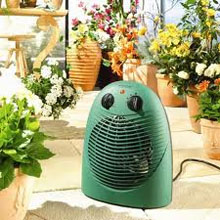
Electric Heaters Resources
- Home
- Efficient Electric Heaters
- Electric Heaters for Different Rooms
- Outdoor Electric Heaters
- Portable Electric Heaters
- 12 Volt Electric Heaters
- 220 Volt Heater
- 3 Phase Electrical Heater
- Above Ground Pool Electric Heater
- Antique Electric Heaters
- Baseboard Electronic Heaters
- Bathroom Electric Heaters
- Best Electric Heaters
- Buy Electric Heaters
- Car Electric Heaters
- Ceiling Electric Heaters
- Ceiling Mounted Electric Heaters
- Ceramic Electric Heaters
- Cheap Electric Heaters
- Commercial Electric Heaters
- Compact Electric Heaters
- Convection Electric Heaters
- DC Electric Heaters
- Economical Electric Heaters
- Efficient Electric Heaters
- Electric Heater Reviews
- Electric Heater With Thermostat
- Fahrenheat Electric Heaters
- Fan Forced Electric Heaters
- Fireplace Electric Heaters
- Flat Panel Electric Heaters
- Floor Electric Heaters
- Forced Air Electric Heaters
- Free Standing Electric Heaters
- General Electric Heaters
- Greenhouse Electric Heaters
- Halogen Electric Heaters
- Hanging Electric Heaters
- Heavy Duty Electric Heaters
- High Efficiency Electric Heaters
- Home Electric Heaters
- In Wall Electric Heaters
- Indoor Electric Heaters
- Industrial Electric Heaters
- Infrared Electric Heaters
- Infrared Electric Heater Reviews
- Large Electric Heaters
- Large Room Electric Heaters
- Low Wattage Electric Heaters
- Marine Electric Heater
- Mini Electric Heaters
- Non Electric Heaters
- Oil Electric Heaters
- Oil Filled Electric Heaters
- Overhead Electric Heaters
- Panel Electric Heaters
- Patio Electric Heaters
- Plug in Electric Heaters
- Process Electric Heaters
- Radiant Electric Heaters
- Recessed Electric Heaters
- Residential Electric Heaters
- RV Electric Heaters
- Safe Electric Heaters
- Small Electric Heaters
- Small Portable Electric Heaters
- Solar Electric Heaters
- Spa Electric Heaters
- Space Electric Heaters
- Swimming Pool Electric Heaters
- Toe kick Electric Heaters
- Tubular Electric Heaters
- Types of Electric Heaters
- Used Electric Heaters
- Vintage Electric Heaters
- Wall Electric Heaters
- Warehouse Electric Heaters
- Electric Heaters FAQ
Greenhouse Electrical Heaters
During cold winter nights, a reliable method for keeping plants in conducive temperatures for growth and maturity are Ggreenhouse electrical heaters. Electrical Heaters have been around for more than two centuries and is relatively new. Its birth came with the radiator (1855-1857) invented by Franz San Galli, a Polish-born businessman, which evolved from water and gas based heat distribution systems.
The Radiator was used in central heating systems and the introduction of the radiator revolutionized heating in modern times. Initially, it was invented to keep people warm indoors, but eventually was also used to run agricultural farms during winter and cold seasons. This shift brought about a significant increase in food supply and plant conservation endeavours.
The Importance of Greenhouse Electrical Heaters.
Greenhouse electrical heaters are an important agricultural tool particularly in modern times as oil prices begin to rise. It more affordable, portable and easily installed compared to other heating systems such as:
- Natural Gas heaters
- Space Heaters
- Forced air heaters
- Hot water heaters
How do they work?
Greenhouse electrical heaters work by means of circulating heat via an air vent. They work best when coupled alongside other greenhouse electrical heaters at different strategic points in the designated area. To use a greenhouse electrical heater, first set the thermostat according to the desired temperature. When the temperature drops below the preset level, the greenhouse electrical heaters will automatically blow hot air until the temperature in the greenhouse is optimum. This method of heating is similar to an air conditioner or fridge, the difference is that it heats instead of cools the environment.
Disadvantages
However, in comparison to the warm water pipe heaters, greenhouse electrical heaters do not distribute heat as evenly. As a result, some areas end up being cooler than others and plants closer to the heater might be damaged due to direct contact with hot air. In the event of having only one heater, users must be careful in selection of where to place the heater. A suggested method is to place the plants on elevated ground (benches) whilst placing the heater on the ground. This ensures that there is no immediate contact between the plant and the heated air.
Selecting a Greenhouse Electrical Heater.
A greenhouse electrical heater can range between 1,250 watts to 3,000 watts in terms of power, depending on size and capacity. High powered electrical heaters have a potentiality of damaging nearby plants due to high heat and moisture loss and should not be used unless in a very large area or distanced from the plants.
As mentioned earlier, multiple smaller units are recommended as opposed to a single powerful heater for better distribution of heat. Heaters with additional features such as adjustable fan speeds (which allow users to blow unheated air) do not cost much and aids in the equal distribution of heat. Greenhouse heaters may cost a bit more than household heaters, but are fashioned specifically for greenhouses and are much safer to be used in greenhouses compared to household ones.
